- Home
- Susan Hill
Howards End is on the Landing Page 3
Howards End is on the Landing Read online
Page 3
I have just read Madame Claire by Susan Ertz, a good novel which my mother, surely, must have read before me (though mine is a modern reprint). It is full of women who wear furs for every day. Madame Claire lives very contentedly in a hotel suite, looked after by her maid Dawson, and oversees the lives of her children and grandchildren in a benign, amused and rather detached way, as they fall in love, try to salvage something from the wreck of an unhappy marriage, plunge into unfortunate business ventures – and always come to Kensington to confide in her. It sounds a dull book but although its confines are limited, it has as much human interest as the novels of Barbara Pym, who worked on a similar miniature canvas to considerable effect.
The sum of these women’s novels is almost always greater than their parts, as was discovered when Lord David Cecil presented Barbara Pym to the world all over again in a Times Literary Supplement article about unjustly neglected writers. The poet Philip Larkin championed her in the same place and, as a result, she had a late flowering into bestsellerdom in the 1970s. They were precisely the kind of books my mother would have borrowed and better than many that she did. Pym’s world of stuttering curates, wistful spinsters and awkward bachelors, of North Oxford and small country parishes, is superficially bland and narrow. What makes it of greater importance is her trenchant eye, her detached and sometimes mordant vision of these well-meaning, fumbling people at odds with so much of life. She is good on petty jealousy, hidden sorrow, unvoiced love, genteel regret, middle-class poverty. And on curates. I have her novels on the paperback shelves in the sitting room, for once set neatly together under P, though, inexplicably, in the middle of a row of modern European drama by Ionesco, Genet and Brecht.
‘Would I like Barbara Pym? Where should I start?’ Anywhere, really. Odd that. It is not always the case. You should never begin reading George Eliot with Middlemarch, nor Trollope with The Way we Live Now, and one of the lesser Muriel Sparks might put you off for good. But Barbara Pym is Barbara Pym. Try Quartet in Autumn. On the other hand, start with Jane and Prudence. You will know within, say, thirty pages, whether she is your cup of tea or not, and if not, then that is probably that. I am glad I did not read The Mill on the Floss first or I would never have tried another George Eliot, and Travels with my Aunt is not a typical novel by Graham Greene, so it does not much matter if you do not care for it. But any Barbara Pym will give you the idea. If you like her, just read on.
I do not know if more people read now than they did in the 1940s and 1950s, but I am certain they go to the library less often. The old private ones no longer exist of course, and public libraries have changed, in many cases for the worse. There are fewer new books to borrow, old ones have been de-commissioned (that is, thrown out), computers have arrived, as have reading glasses for sale and DVDs for rent. There are children’s sections in libraries and they are often the best, most popular part, but are there separate buildings called ‘The Children’s Library’ any longer? There was one in Scarborough, attached, but separate from, the main lending and reference libraries and when we arrived there every Saturday morning, my mother walked in at one side while I walked down to the other. If the private library had Boots’ stamps and stickers, the public children’s library sometimes had labels on a book declaring that it had been fumigated. Infectious and contagious diseases were still rife then. Chickenpox. Measles. Scarlet fever. Tuberculosis. Mumps. Whooping cough. Children died of them. Books that went into infected houses might be returned thick with germs, so it was necessary to report certain illnesses when books were returned, so that they could be put into special fumigation chambers to be rendered clean and safe again.
It was in the Scarborough Children’s Public Library that I discovered not only the Bobbsey twins and Anne of Green Gables, the stories of Malcolm Saville, Huckleberry Finn and Lamb’s Tales from Shakespeare. Most wonderful of all, I discovered Enid Blyton.
Enid Blyton’s books did for my generation, and several generations since, what J.K. Rowling’s have done recently – broke that invisible barrier between children who are natural-born readers and children who are not. Unless they have been adversely influenced by an adult, no child has ever felt ashamed of being seen with a Harry Potter, though they might never admit to reading any other book. Adults may say what they like – parents, teachers and other know-alls. Enid Blyton excited us, took us into worlds of mystery, magic, adventure and fun. Yes, her prose is bland, yes, the vocabulary is not particularly stretching. But Blyton had the secret, the knack. I missed out on the Noddy books though not on the Magic Faraway Tree, but my real Blytons were the stories of the Famous Five, the Secret Seven, the Mystery of … series and the boarding school world of Malory Towers. I lived with those boys and girls, who were around my own age but lived far more interesting lives, with nicer houses, more fun parents, greater freedom to gallop about the countryside on horses, take out boats and bikes, and go hiking and mountain climbing. There were villains, there was danger, they got into scrapes, yet their world was essentially serene and safe and for the duration of the story I, like many thousands of other readers between the ages of seven and twelve or so, was wholly absorbed in it. These were my friends and companions, I was one of the Five and the Seven, I went to the Mountain of Adventure and Spooky Cottage, I was in the Fifth at Malory Towers. We all were. Blyton taught me what books could do, where the imagination could take me, how I could be transported to other places, know the sort of people I might never know in reality and learn about how the world of friendship and sibling relationships worked, too – a vital lesson for an only child. I still do not understand why Blyton has been frowned upon by adults for so many years. What is there to disapprove of, what is harmful? Limited, yes, but what book does not have its limits? My mother preached against Blyton while reading a light-romantic author called Naomi Jacob, for heaven’s sake.
Most of my Blytons were library books so I do not have any on my shelves now – except one, the book I received for Christmas when I was five and a half. It has a bright-green cloth binding with the lettering, Enid Blyton’s Treasury, in gold, and the spine is weak from being opened too many times. There are just two books which have the power to catapult me back sixty years into childhood – Alice in Wonderland, and this. When I open it I am transported, by the titles and the stories and the line illustrations, in the most extraordinary way – the way of the Proustian madeleine. The Mystery of Melling Cottage, A Night on Thunder Rock, and, perhaps most evocative of all, The Wild West Kids, in which some children join a circus for a day. Circuses were circuses then, with real lions and tigers and the roar and smell of danger. Bertram Mills Circus visited Scarborough every year, arriving with a parade through the town, just like the one in my book. Real life and fiction merged. For two pins I would have run away to join the circus. I still might.
That one remaining Blyton book of the dozens I read happens to sit next to Harry Potter and the Goblet of Fire. But whereas adults read Harry P, I doubt if many ever read Blyton, except aloud in the form of a bedtime story. Rowling’s world of magic seems to cross every age barrier. I once came home late, when the rest of the household were in bed, and, even though they were fully adult, I still went in to check that the two daughters had not died a cot death. That night I found them, aged twenty-three and fifteen, and a husband, aged a lot older, each tucked up reading a different Harry Potter. Of how many authors, living or dead, might one say that?
Next to the Pop-Up Books
The handsome creature comes to rest,
Accepts the Orchid’s proffered best,
He sips the nectar rare. Now gently turn the page between,
The striking couple will be seen. Then close the book with care.
IT IS NOT EASY to convey, in a world stuffed full of new books in high streets papered with bookshops, how rare and exotic a thing a brand-new book was to a child born during the war, and learning to read and to love books and stories in the 1940s and early 1950s. Books came printed on poor, thin, almost transparent
paper, and bore a horrid official stamp announcing that they conformed to Government War Standards, and they were not easy to come by.
But Christmas always brought at least a couple – the longed-for Rupert Bear Annual and another, about two characters called Japhet and Happy. Rupert, with his friends Pong-Ping and Tiger Lily, and his yellow- and black-checked scarf, is still going strong. I used to memorise page after page of the story-rhymes, which were so easy to get by heart. But Japhet and Happy, created by the News Chronicle cartoonist Frank Horrabin, and part of a series about the Noah Family, have disappeared. Annuals were an essential part of childhood; indeed, The Beano Annual continues to appear in my Christmas stocking every year.
But in 1948, when I was six, I was given a book that was quite different to anything I had ever seen in my young life, a book so magical I could hardly breathe when I opened it; it was a book that began a collection to which I still add, and which I often spend five minutes (or twenty-five minutes) opening and enjoying.
My first pop-up book was the latest of a series which had begun in 1929, by another man working in newspapers – S. Louis Giraud, who came from the production department of the Daily Express to invent the Bookano series – the first truly ‘automatic’ books. The name was a take on the famous Meccano construction sets consisting of little bits of metal with holes in them, to be joined by screws and washers, and supposedly capable of being made into everything, including St Paul’s Cathedral, from a skyscraper to an aircraft carrier. Its literary counterpart, Bookano, was an anthology of fictional stories and tales from history with some coloured pictures, but the real joy of the series was, and is, the pop-ups. They were not called pop-ups then, they were described by a sentence which scans so perfectly you cannot help chanting it every time you say the word ‘Bookano … with Pictures that Spring up in Model Form’.
I still have three of my old Bookanos. They are well-read, well-loved, well-handled, though the pictures that spring up in model form are all intact. I must have been very careful with them. Modern paper-engineering has come many a mile since these simple creations, but, to my eyes, the Bookano Westminster Abbey and Tower Bridge and a working windmill rising up magnificently from between the ordinary printed pages still take the breath away with surprise. That is what a pop-up book should do – take the breath away for a single, amazing moment which can be repeated again and again.
It was Bookano that taught me to love the pop-up book and my year of reading from home was enlivened by the time I spent going through my collection. Some are educational, some are the stuff of fantasy, some are babyish, and others are for grown-ups (there is, though I do not own it, a pop-up Kama Sutra).
I had started my journey in Indian summer weather but two days later we had a monsoon, with dark grey clouds like lead balloons weighing down the sky, so I spread some of my favourite pop-up books on the kitchen table, to play with them there.
Robert Sabuda is the modern master of the pop-up. His paper engineering is intricate, detailed and incredibly beautiful and, as his home country, the USA, has so many marvels which lend themselves so well to the form, I put his amazing America the Beautiful at the top of the pile. Open it. Here are the Great Plains, represented by a pop-up corn mill and waves of paper grain which pop up in rows. Here is the most wondrous Mississippi river boat. All of these pop-ups are cut from stark-white paper card and the finest of all is New York: skyscrapers, Statue of Liberty, and here, shrouded in a small envelope to one corner, the Twin Towers.
The idea of turning Moby-Dick into a three-dimensional graphic novel (by paper-engineer Sam Ita) was a clever one, and best of all I love the ship’s deck from which pops up a pulpit, a preacher, a rows of sailors each holding a pop-up Bible; and, when the whole boat pops up, complete with sails all carefully held by thin cotton threads, the effect is breathtaking.
Our own master paper-engineer and storyteller combined is Jan Pienkowski. I sat happily opening and closing his Fungus the Bogeyman Plop-up Book, Robot and Haunted House while the rain streamed down the windows. What more could book-life hold?
Great Expectations Behind the Sofa
IT WAS ONE of the reasons that I married my husband (along with discovering that we each had photographs of ourselves aged three riding a donkey on Scarborough sands – possibly the same donkey, twelve years apart). He told me quite early on, possibly even the first time we met, that he had read Pickwick Papers when he was eleven, sitting on the floor behind the sofa of his family house.
With me it was Great Expectations, and the sofa – beige moquette with lace antimacassars, as sofas were – belonged to my great-aunt, whose bungalow in a leafy avenue of Southport we often visited. Southport and scenes from Dickens are intertwined forever in my mind. I have read Dickens over and over ever since, but have not re-visited Southport since the 1950s. Beryl Bainbridge, who knew it in the same period, wrote that it had lost its character, to become just like anywhere else’. My great-aunt was the reader and my great-uncle, who had been blind from his teens, listened to talking books on a huge, horned gramophone. These arrived with the postman, free to borrow, free to return, then as now, but then were in dozens, like great, round black plates, and they were delivered in huge boxes tied with leather straps and buckles. I can still hear Churchill’s voice booming out of the microphone, as he read his memoirs and speeches aloud to my uncle.
The actual books in the house were few, and probably the glass-fronted case and its contents were duplicated in front parlours across the land – the Bible, a five-volume encyclopaedia, the Oxford English Dictionary, Palgrave’s Golden Treasury, Roget’s Thesaurus, a ready reckoner, and the complete works of William Shakespeare, Charles Dickens and Sir Walter Scott.
I have just been down to the sitting room to look at that same set of Dickens, which my great-aunt finally gave to me when I was twelve because, she said, I obviously got more out of it than she ever would. I have three other complete sets, and now I read the Oxford, in hardback, because it has the original Boz and Phiz illustrations but rather better print. My great-aunt’s set is bound in speckled brown, the titles are in gold, and the pages have yellowed with age. The paper is of poor quality so that the print is unclear, and it is very small. I do not wear glasses for reading but the type is too small for me all the same. But sometimes I like to open Bleak House or The Old Curiosity Shop and leaf through a few pages because they still smell of my great-aunt’s house and the warm den behind the sofa.
I could spend my year of reading from home with Dickens alone – well, almost. In the silly game of which authors to throw overboard from the lifeboat and which one – just one – to save, I would always save Dickens. He is mighty. His flaws are huge but magnificent – and all of a piece with the whole. A perfect, flawless Dickens would somehow be a shrunken, impoverished one. Yes, he is sentimental, yes, he has purple passages, yes, his plots sometimes have dropped stitches, yes, some of his characters are quite tiresome. But his literary imagination was the greatest ever, his world of teeming life is as real as has ever been invented, his conscience, his passion for the underdog, the poor, the cheated, the humiliated are god-like. He created an array of varied, vibrant, living, breathing men and women and children that is breathtaking in its scope. His scenes are painted like those of an Old Master, in vivid colour and richness on huge canvases. His prose is spacious, symphonic, infinitely flexible. He can portray evil and create a menacing atmosphere of malevolence better than any other writer – read Little Dorrit, read Our Mutual Friend, read Bleak House if you don’t believe me. He is macabre, grotesque, moralistic, thunderous, funny, ridiculous, heartfelt. Nobody has ever written as he wrote about London, nobody has described the Essex Marshes so well, nobody has opened a book to such effect as he does in Bleak House. There is no area of life he does not illuminate, no concern or cause he does not make his own, no sentences, no descriptions, no exchanges, no sadnesses or tragedies or betrayals …
There are one or two of his novels that I never want to read ag
ain, A Tale of Two Cities being the first. I don’t think he felt comfortable writing historical fiction, and it shows. Though I am glad to have read it, I am happy to leave David Copperfield on the shelf, in spite of Mr Micawber, and my husband is welcome to laugh at Pickwick because I never could …
But look at what is left. One of my Complete Dickens sets has introductions by Peter Ackroyd which are always worth re-reading, and among the academic literary criticism I sometimes return to, John Carey’s brilliant study of Dickens’s imagination, The Violent Effigy, has a place at high table. Ah, John Carey. The man never writes a dull word and I cherish the article on the joys of vegetable gardening which he wrote years ago for The Times as much as his books on Donne and the wonderfully thought-provoking, and provocative, What Use are the Arts? When a first-rate mind and a razor-sharp command of the language come together, the result is formidable. If laughter is the best medicine, a bracing mental walk with a writer like John Carey is a top tonic.
I started my re-read through Dickens with a short novel, Great Expectations. Anyone would do well to begin there and then go on to the mighty and moving, though untypical A Christmas Carol – best read, of course, on 24 December. After that, it is time I went back to Little Dorrit. Is it the best? I sometimes think so. Then again, I change my mind. Bleak House is the greatest of all the novels. But Our Mutual Friend has, I think, absolutely no flaws, and there is something about its descriptions of London’s river at its blackest, most secret, most terrifying, and the low life that lurked about its quays and alleys and pot-houses, that takes me back to those Michaelmas terms, and the chill mist drifting off the Thames. But Dickens writes wonderfully about weather too and for the best paragraph about fog that I know, let alone probably the best of all his openings, it still has to be Bleak House.

 Mrs De Winter
Mrs De Winter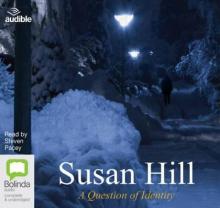 A Question of Identity
A Question of Identity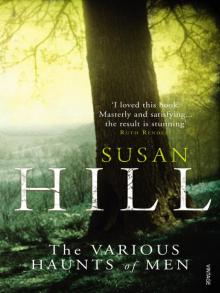 The Various Haunts of Men
The Various Haunts of Men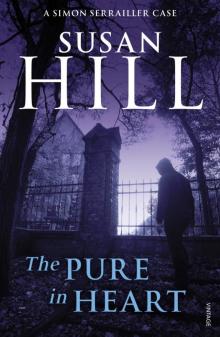 The Pure in Heart
The Pure in Heart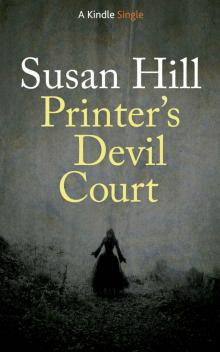 Printer's Devil Court
Printer's Devil Court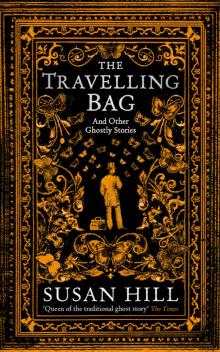 The Travelling Bag
The Travelling Bag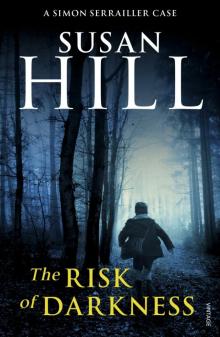 The Risk of Darkness
The Risk of Darkness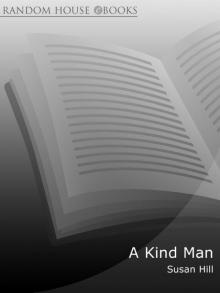 A Kind Man
A Kind Man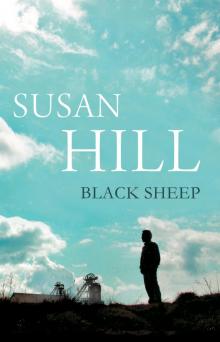 Black Sheep
Black Sheep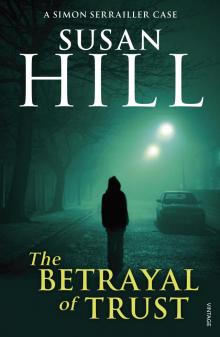 The Betrayal of Trust
The Betrayal of Trust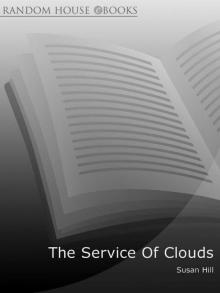 The Service of Clouds
The Service of Clouds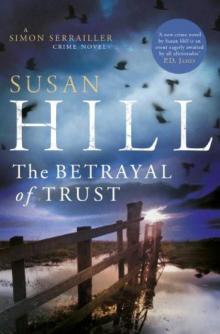 Betrayal of Trust
Betrayal of Trust The Small Hand
The Small Hand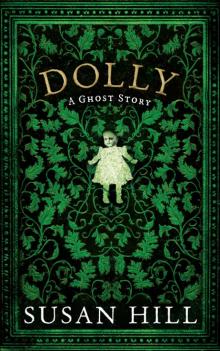 Dolly
Dolly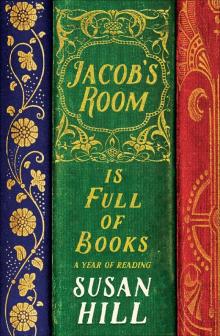 Jacob's Room Is Full of Books: A Year of Reading
Jacob's Room Is Full of Books: A Year of Reading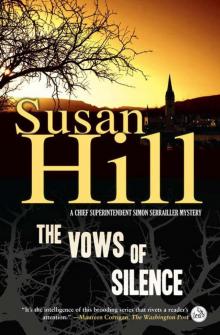 The Vows of Silence
The Vows of Silence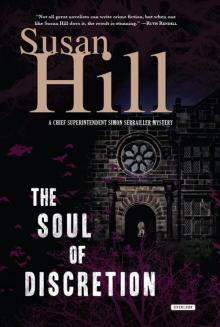 The Soul of Discretion
The Soul of Discretion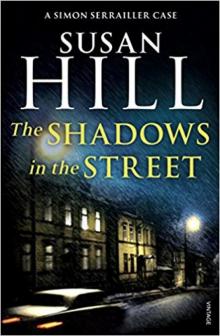 The Shadows in the Street
The Shadows in the Street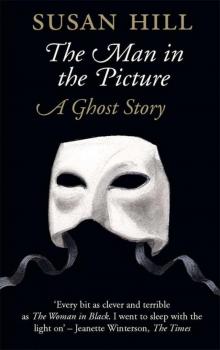 The Man in the Picture
The Man in the Picture Air and Angels
Air and Angels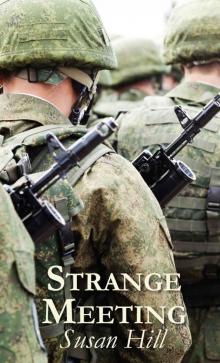 Strange Meeting
Strange Meeting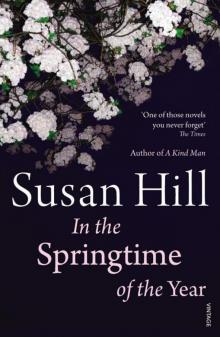 In the Springtime of the Year
In the Springtime of the Year Howards End Is on the Landing: A Year of Reading From Home
Howards End Is on the Landing: A Year of Reading From Home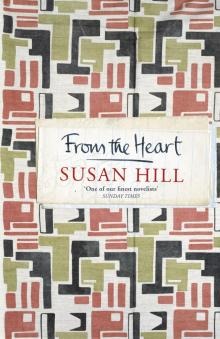 From the Heart
From the Heart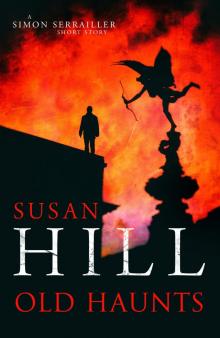 Old Haunts
Old Haunts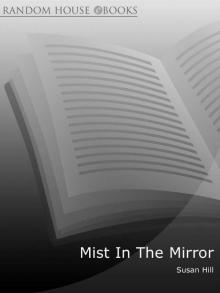 The Mist in the Mirror
The Mist in the Mirror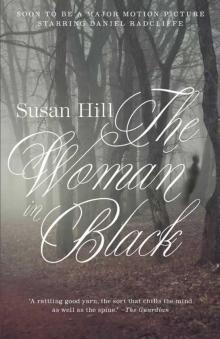 The Woman in Black: A Ghost Story
The Woman in Black: A Ghost Story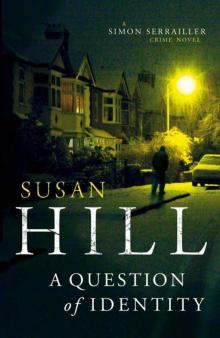 A Question of Identity (Simon Serrailler 7)
A Question of Identity (Simon Serrailler 7)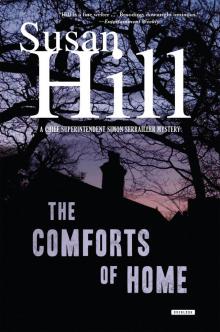 The Comforts of Home
The Comforts of Home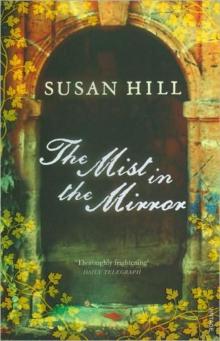 Mist in the Mirror
Mist in the Mirror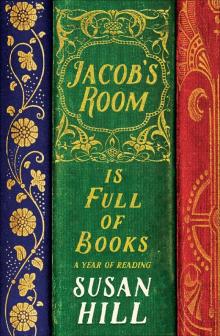 Jacob's Room is Full of Books
Jacob's Room is Full of Books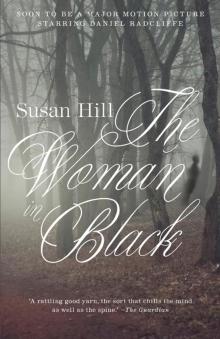 The Woman in Black
The Woman in Black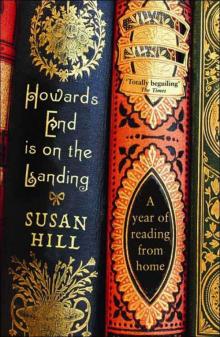 Howards End is on the Landing
Howards End is on the Landing